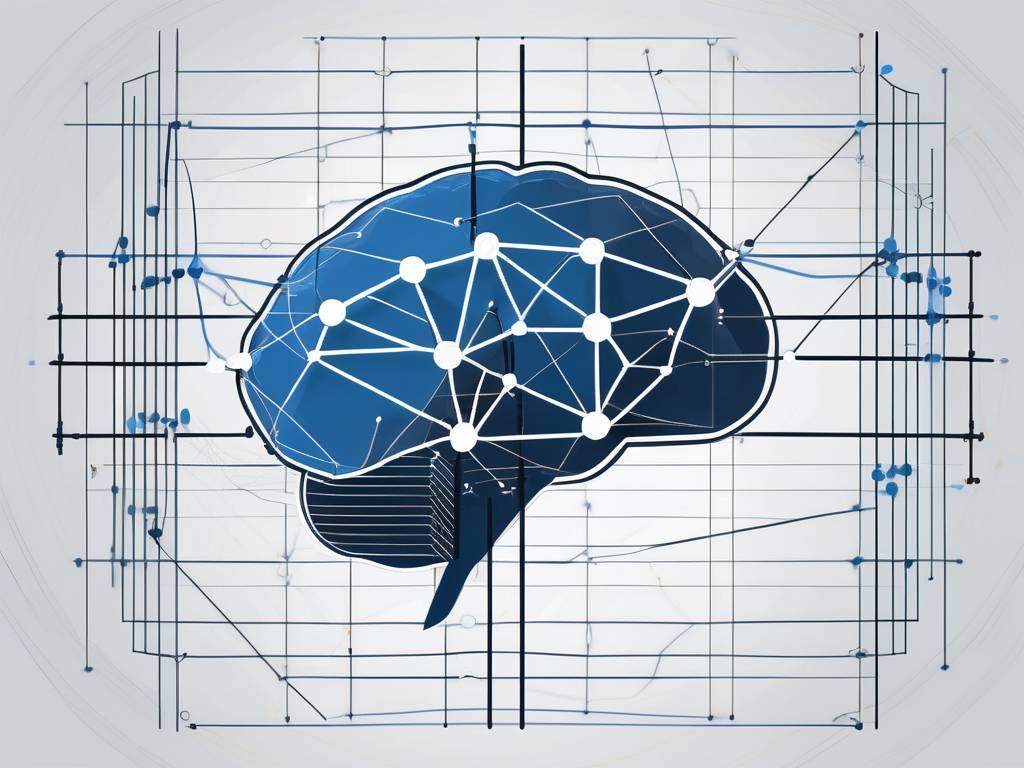Classification: Machine Learning Explained
Classification is a fundamental concept in machine learning, a branch of artificial intelligence that enables computers to learn from and make decisions or predictions based on data. This process involves the use of algorithms to parse data, learn from it, and then make a determination or prediction about something in the world. In the context of machine learning, classification refers to the task of predicting the class or category of an object or sample based on its features.
Classification is a type of supervised learning, a machine learning task where the model is trained on a labeled dataset. In this dataset, each instance contains a set of features and a label. The goal of the model is to learn a mapping from features to labels so that it can accurately predict the label of new, unseen instances. Classification is widely used in various fields, including image recognition, speech recognition, medical diagnosis, and credit scoring.
Types of Classification
There are several types of classification in machine learning, each with its unique characteristics and use cases. The primary types include binary classification, multiclass classification, and multilabel classification.
Binary classification is the simplest type of classification, where the model predicts whether an instance belongs to one of two classes. An example of binary classification is email spam detection, where each email is classified as either ‘spam’ or ‘not spam’.
Binary Classification
Binary classification is a type of classification where the output variable can take only two values, for example, ‘yes’ or ‘no’, ‘true’ or ‘false’, ‘spam’ or ‘not spam’, etc. It is the simplest form of classification and serves as the basis for understanding more complex classification problems.
Binary classification algorithms work by learning a decision boundary in the feature space that separates the two classes. The decision boundary can be a line in two-dimensional space, a plane in three-dimensional space, or a hyperplane in higher dimensions. Once the decision boundary is learned, new instances can be classified by determining which side of the boundary they fall on.
Multiclass Classification
Multiclass classification, also known as multinomial classification, is a type of classification where the output variable can take more than two values. For example, a machine learning model that predicts the type of fruit based on features like color, size, and shape is a multiclass classification problem because the output variable (type of fruit) can take several values (apple, banana, cherry, etc.).
Multiclass classification algorithms work by learning multiple decision boundaries that separate the different classes. There are different strategies for learning these decision boundaries, including one-vs-all (OvA) and one-vs-one (OvO). In the OvA strategy, for each class, a binary classifier is trained to distinguish that class from all other classes. In the OvO strategy, for each pair of classes, a binary classifier is trained to distinguish between those two classes.
Multilabel Classification
Multilabel classification is a type of classification where each instance can belong to multiple classes. For example, in a movie recommendation system, each movie can be assigned multiple genres, making it a multilabel classification problem.
Multilabel classification is more complex than binary or multiclass classification because the output variable is a set of labels rather than a single label. This complexity requires specialized algorithms that can handle the dependencies between labels. Some strategies for multilabel classification include problem transformation methods, which transform the multilabel problem into one or more binary or multiclass problems, and algorithm adaptation methods, which adapt existing classification algorithms to handle multilabel data.
Classification Algorithms
There are numerous algorithms used for classification tasks in machine learning. These algorithms can be broadly categorized into linear classifiers, decision tree classifiers, Bayesian classifiers, support vector machines, and neural networks.
Linear classifiers, such as logistic regression and perceptron, work by learning a linear decision boundary in the feature space. Decision tree classifiers, such as the C4.5 algorithm, work by learning a tree-like model of decisions based on the features. Bayesian classifiers, such as the naive Bayes classifier, work by applying Bayes’ theorem to predict the class probabilities based on the features. Support vector machines work by learning a hyperplane that maximizes the margin between the classes. Neural networks, such as the multilayer perceptron, work by learning a complex mapping from features to labels through a network of artificial neurons.
Linear Classifiers
Linear classifiers are a family of classification algorithms that learn a linear decision boundary in the feature space. The decision boundary is defined by a linear equation of the form w.x + b = 0, where w is the weight vector, x is the feature vector, and b is the bias. The weight vector determines the orientation of the decision boundary, and the bias determines its position.
Examples of linear classifiers include logistic regression and perceptron. Logistic regression is a probabilistic classifier that models the log-odds of the positive class as a linear combination of the features. The perceptron is a binary classifier that learns the weights and bias by iteratively adjusting them to minimize the number of misclassifications.
Decision Tree Classifiers
Decision tree classifiers are a family of classification algorithms that learn a tree-like model of decisions based on the features. Each node in the tree represents a feature, each branch represents a decision rule, and each leaf represents a class.
Examples of decision tree classifiers include the C4.5 algorithm and the CART (Classification and Regression Trees) algorithm. The C4.5 algorithm builds the decision tree by recursively splitting the data based on the feature that provides the highest information gain. The CART algorithm builds the decision tree by recursively splitting the data based on the feature that minimizes the Gini impurity.
Bayesian Classifiers
Bayesian classifiers are a family of classification algorithms that apply Bayes’ theorem to predict the class probabilities based on the features. Bayes’ theorem states that the posterior probability of a class given the features is proportional to the prior probability of the class times the likelihood of the features given the class.
An example of a Bayesian classifier is the naive Bayes classifier. The naive Bayes classifier makes the naive assumption of conditional independence between the features given the class. This assumption simplifies the computation of the likelihood, making the naive Bayes classifier computationally efficient and easy to implement.
Evaluation of Classification Models
Evaluating the performance of classification models is a crucial step in the machine learning process. The goal of evaluation is to assess how well the model generalizes to unseen data. Several metrics are used for this purpose, including accuracy, precision, recall, F1 Score, and area under the ROC curve (AUC-ROC).
Accuracy is the proportion of correct predictions among the total number of predictions. Precision is the proportion of true positive predictions among all positive predictions. Recall, also known as sensitivity or true positive rate, is the proportion of true positive predictions among all actual positives. The F1 Score is the harmonic mean of precision and recall, providing a balance between the two. AUC-ROC is the area under the receiver operating characteristic curve, which plots the true positive rate against the false positive rate at various threshold settings.
Confusion Matrix
A confusion matrix is a table that is often used to describe the performance of a classification model on a set of test data for which the true values are known. It is a specific table layout that allows visualization of the performance of an algorithm. Each row of the matrix represents the instances in a predicted class, while each column represents the instances in an actual class.
The confusion matrix itself is relatively simple to understand, but the related terminology can be confusing. The basic terms are true positives (TP), true negatives (TN), false positives (FP), and false negatives (FN). These terms are used to define the aforementioned metrics like accuracy, precision, recall, and F1 Score.
ROC Curve
The receiver operating characteristic (ROC) curve is a graphical plot that illustrates the diagnostic ability of a binary classifier system as its discrimination threshold is varied. The ROC curve is created by plotting the true positive rate (TPR) against the false positive rate (FPR) at various threshold settings.
The area under the ROC curve (AUC-ROC) is a single scalar value that summarizes the overall performance of the classifier. An AUC-ROC of 1.0 indicates a perfect classifier, while an AUC-ROC of 0.5 indicates a random classifier. The AUC-ROC is widely used in machine learning for model comparison because it is insensitive to imbalanced class distributions and misclassification costs.
Conclusion
Classification is a critical concept in machine learning that involves predicting the class or category of an object or sample based on its features. There are several types of classification, including binary, multiclass, and multilabel classification, and numerous algorithms for performing classification, including linear classifiers, decision tree classifiers, Bayesian classifiers, support vector machines, and neural networks.
Evaluating the performance of classification models is an essential step in the machine learning process. Several metrics are used for this purpose, including accuracy, precision, recall, F1 Score, and AUC-ROC. These metrics provide a comprehensive view of the model’s performance, helping to identify its strengths and weaknesses and guide further improvements.

 hello@westlink.com
hello@westlink.com  (866) 954-6533
(866) 954-6533  700 N Colorado Blvd,
700 N Colorado Blvd,






Comments